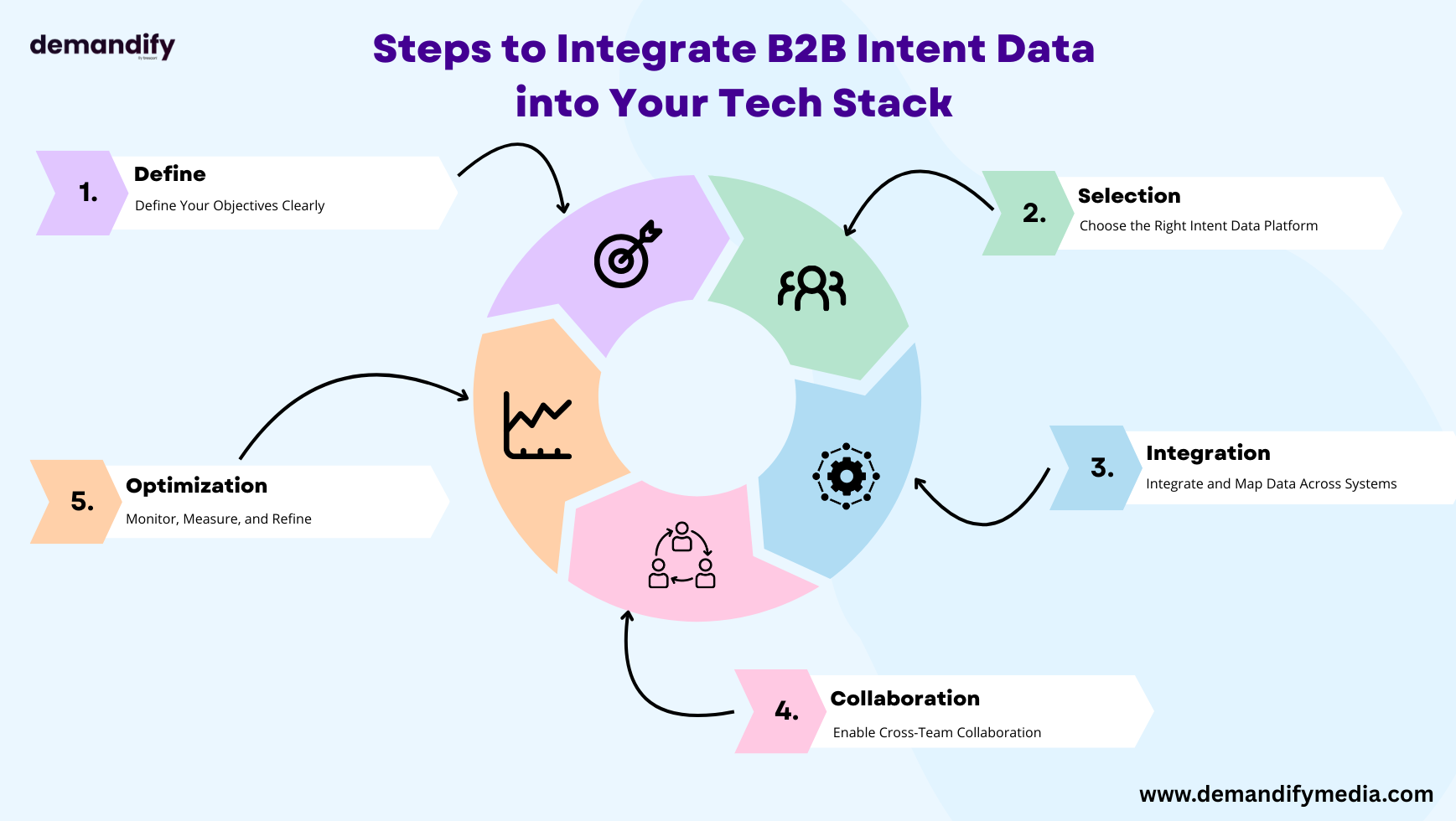How to Integrate B2B Intent Data into Your Marketing Tech Stack

Today’s market never sleeps, and selling teams can barely blink before the next deadline screams at them, so knowing the right buyer at the right moment feels more myth than strategy. B2B intent data, however, is the one tip that keeps turning the story around. It shoestrings together the little online actions a firm takes and tells us when a real buying interest is brewing. Yet, just stacking up those actions in a spreadsheet won’t win the game. The magic shows up only if those data points are smoothly glued into the wider marketing tech universe. Nail that, and precision dialing, the personal touch in messaging, and money-saving smoothness all decide to show up at the same dinner party.
Why Intent Data Matters in B2B Marketing
The weird part? intent signals often show the buyer’s foot is already hovering over the “buy” button before anyone makes a call. A firm studying a deep-dive paper on cloud security or skimming video demos of automation has almost finished the checklist long before they check a sponsor page. We call those little searches digital breadcrumbs, and they tell us how to find opportunity before they hit the “contact sales” page.
That “before” part is what makes intent the superhero of B2B lead gen. It vests sellers with early chapter previews so they can spend coffee budget on accounts already leaning toward buying. The signal cuts wasted effort in half—and a half is kinder to reps, engineers, and inboxes. Pipelines pop out of fast-forward, and customer conversations stay sharper, more precise, and less “generic-blasting-at-the-entire-Internet” sarcasm.
Steps to Integrate Intent Data into Your Tech Stack
1. Define Your Objectives Clearly
Before you plug in intent tools, you have to be clear about what you want them to do. Do you want to spot the biggest accounts faster, make outreach way more personalized, or supercharge your account-based marketing? Figuring this out ahead of time means your new data fits smoothly with what your whole company is trying to achieve.
2. Choose the Right Intent Data Platform
Not every intent data system gathers or crunches signals the same. Some zoom in on what buyers read, while others lookup their broader digital research habits. Choose an intent data platform that plugs right into your CRM, marketing automation, or account-based marketing tools so the data moves through your stack without traffic jams.
3. Map Data with Your Existing Systems
You get the biggest lift when intent data rides the same pipes as your other tools. For example, tying intent scores to lead records in your marketing automation system lets campaigns automatically shift in response to buyer signals. Sales teams can get real-time alerts when a big account suddenly dives into research on a key solution, ready to act while the fire is hot.
4. Enable Cross-Team Collaboration
You get the biggest lift when intent data rides the same pipes as your other tools. For example, tying intent scores to lead records in your marketing automation system lets campaigns automatically shift in response to buyer signals. Sales teams can get real-time alerts when a big account suddenly dives into research on a key solution, ready to act while the fire is hot.
5. Monitor, Measure, and Refine
A smooth intent data roll-out isn’t a light switch. It’s a Wi-Fi upgrade: check the dashboard tonight, adjust it tomorrow, adapt the rest of the month. Figure out which intent signals actually turn into smiles of intent. Swivel the scoring, reshape the triggers, zing the right scoring. Keep the engine humming and the data actually useful, not a flood of notifications that drown your strategy.
Benefits of Seamless Integration
When B2B marketers tuck intent drip by drip into their daily grind, the payoffs start flashing neon. Campaigns laser-focus, call scripts fit so perfect you think you’re reading minds, and the sales clock ticks faster. Teams hang together, so the prospect never feels a bump, and the thin-budget sheet never sees those sad, old “sorry for bothering you” cost line. You spend only on the accounts that bob, wave, and confirm, “I might be on the verge of a purchase.”
Conclusion
With intent insights at the center of your B2B intent data strategy, you've made a smarter prospecting and engagement approach. Rather than focusing entirely on demographic or firmographic data, marketers now take actions based on signals of real-time interest, enabling tech stack to be an engine of strategic growth.
Read Other Information:
What Agentic AI in Demand Generation Means for B2B Marketers
Why B2B Demand Generation Works Best with Personalized Campaigns
Why a Customer-Centric Approach Boosts Your Demand Gen Funnel Results
- AI
- Vitamins
- Health
- Admin/office jobs
- News
- Art
- Causes
- Crafts
- Dance
- Drinks
- Film
- Fitness
- Food
- Juegos
- Gardening
- Health
- Home
- Literature
- Music
- Networking
- Other
- Party
- Religion
- Shopping
- Sports
- Theater
- Wellness



